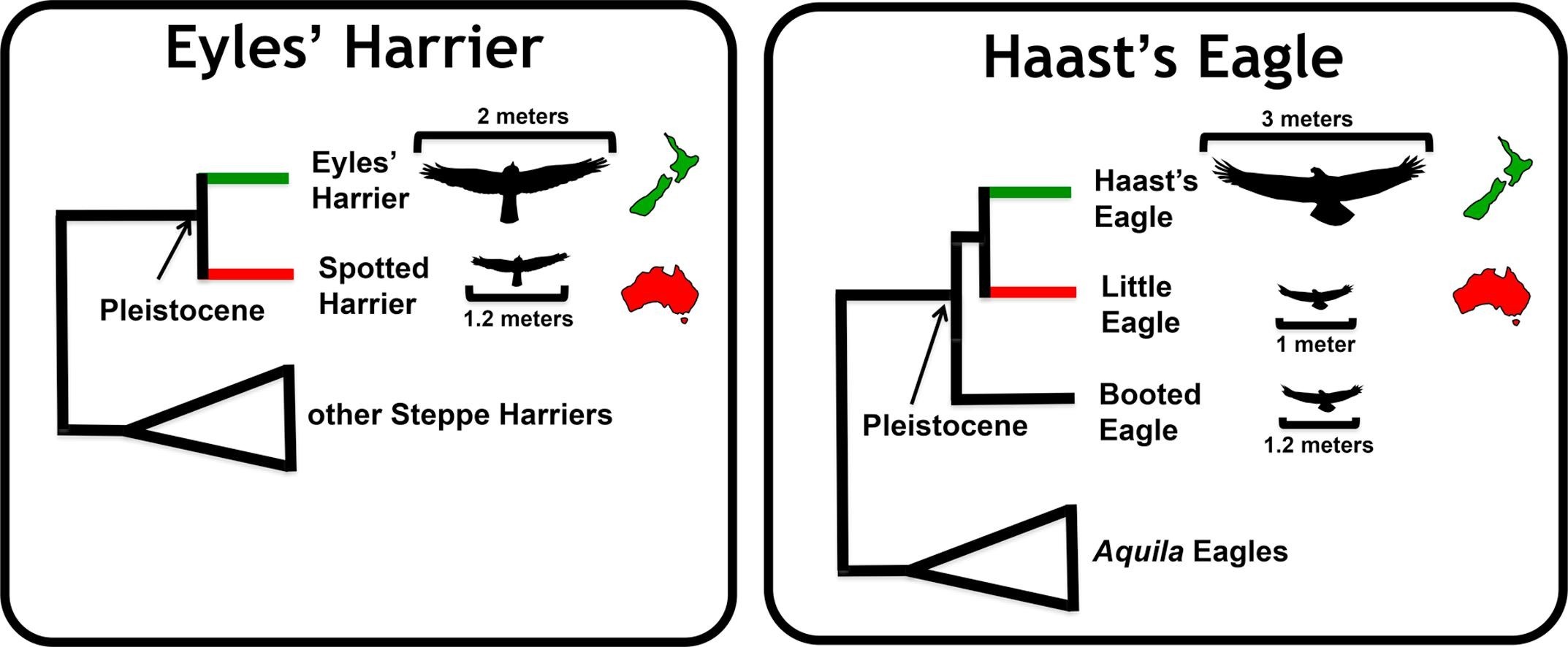Swooping on 3 metre wings through the forests of pre-human New Zealand, Haast's Eagle was our apex predator. The world's largest eagle and the only animal capable of hunting the larger species of moa, it could weigh up to 15 kg.

The world has been fascinated by this enormous bird of prey since the Museum's founder, Julius Haast, first described it in 1871. Drawings on the walls of some South Island rock shelters suggest it fascinated Māori long before that. But we've only recently understood how it came to be here.
I contributed to a study, published in the journal Molecular Phylogenetics and Evolution, that suggests Haast's Eagle evolved relatively recently from a much smaller Australian ancestor.
We compared DNA extracted from a Haast's Eagle shoulder bone in the Museum's collection to the DNA of its closest living relatives, Australia’s Little Eagle and the Eurasian Booted Eagle. These birds have wingspans of just over a metre and typically weigh around 1 kg, which means they would have been dwarfed by their extinct Kiwi cousin.
The common ancestor of the Little Eagle and Haast’s Eagle probably arrived in New Zealand from Australia near the start of the most recent Ice Age – less than 2.5 million years ago.






